Dutch braids have stood the test of time, becoming a favorite hairstyle across generations. Known for their distinctive underhand weaving technique, these braids create a striking, raised effect that sets them apart. Their enduring popularity can be attributed to their versatility and the way they effortlessly add elegance to any look. Whether worn casually or for a special occasion, Dutch braids continue to be a go-to choice for many women.
For those with long hair, Dutch braids offer even more styling possibilities. The length provides ample room for creativity, allowing for intricate designs and combinations with other styles. Long hair enhances the visual impact of the braid, making it a stunning focal point. The ability to keep hair neatly in place while showcasing its length is another reason why many women with long hair are drawn to this style.
In the following sections, we’ll explore what makes Dutch braids unique and how to master this classic technique. We will also look at modern twists that can refresh the traditional style, making it suitable for various occasions. Whether you’re new to braiding or looking to refine your skills, there’s something here for everyone. Keep reading to discover how you can incorporate this timeless style into your hair routine.
What Makes Dutch Braids Unique?
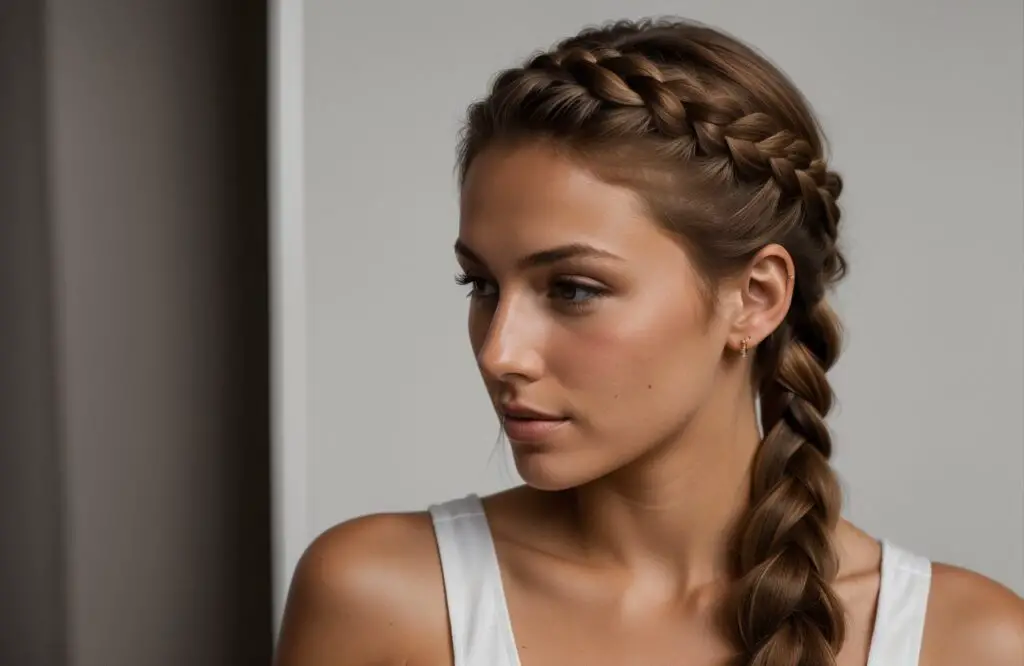
The Dutch braid technique is a fascinating way to style hair, creating an impressive look that many women love. Unlike the classic braid where hair strands are crossed over each other, the Dutch braid involves crossing the sections under. This method results in a braid that sits above the surface, giving it a three-dimensional effect. While mastering this technique might require some practice, understanding the steps can help you achieve this striking style.
How do Dutch braids differ from French braids? Although they may seem similar, the two styles have distinct differences. French braids create a flat, elegant look by crossing the hair over the top, resulting in a soft, woven appearance. In contrast, the Dutch braid stands out because the sections are crossed underneath, producing a bold and pronounced look. Do you have a preference for one style over the other? Knowing these differences can help you choose the right braid for your desired look.
Dutch braids offer several benefits, especially for those with long hair. This style keeps hair neatly secured and manageable throughout the day, while the raised design adds visual appeal. Here are some advantages of choosing this braiding technique for longer hair:
- Keeps hair in place and reduces tangling
- Enhances the overall aesthetic with a bold appearance
- Allows for various styling options, including updos and half-up styles
- Adds texture and dimension to otherwise flat hair
- Suitable for both casual and formal occasions
The history of Dutch braids traces back to various cultures, where braiding has been a form of expression for centuries. This style has evolved from practical uses and social status symbols to a popular choice in contemporary fashion. Understanding this history adds an extra layer of appreciation for the classic technique and its journey through the ages.
One of the most appealing aspects of Dutch braids is their versatility. This hairstyle can be adapted to fit different occasions, from casual outings to elegant events. By adjusting the braid’s size or incorporating multiple braids, the possibilities are endless. You can mix and match with accessories and other styles to create something truly personal.
Think about some styling ideas like these: pairing with hair jewelry for a festive look, combining with loose waves for a bohemian vibe, securing them into a bun for a polished appearance, blending with other braided styles for innovative designs, or using colorful ribbons or thread for personalization.
Whether you’re looking for a practical way to keep your hair in place or a bold style statement, Dutch braids offer a unique solution. Their ability to transform with different techniques and accessories makes them a favorite for many women. Explore the various ways you can incorporate this classic style into your hair routine and enjoy the creativity it brings.
How to Master the Dutch Braid Technique
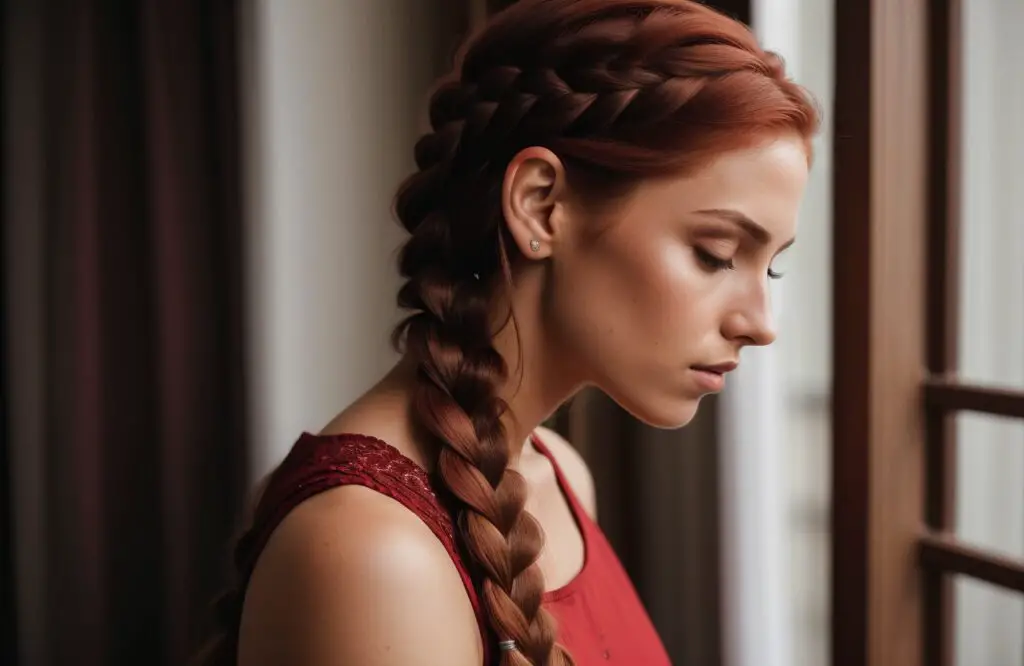
Mastering the art of braiding can transform your hairstyling routine, and the Dutch braid is a great place to start. This style, known for its raised appearance, is both elegant and practical. But how do you create this look? It begins with having the right tools and products at your disposal.
Essential Tools and Products for Braiding
To create a Dutch braid, you’ll need a few basic items. A good brush is essential for detangling your hair, ensuring it’s smooth and easy to work with. Hair elastics will secure the braid once it’s complete. You might also want to have some styling gel or mousse on hand to tame any flyaways and add grip to your hair. A fine-tooth comb can help with sectioning, and hairpins can be useful for securing any loose strands.
Step-by-Step Guide to Creating a Dutch Braid
Creating a Dutch braid involves a few simple steps. Start by brushing your hair to remove any tangles. Next, take a section of hair from the top of your head and divide it into three equal parts. Begin braiding by crossing the right section under the middle, then the left section under the new middle. As you continue, add small sections of hair to each side before crossing them under. Repeat this process until you reach the nape of your neck, then finish with a regular braid and secure it with an elastic.
Tips for Achieving a Neat and Tight Braid
Keeping your braid neat and tight can be tricky, but with a few tips, you can achieve a polished look. First, make sure your sections are even from the start to prevent the braid from looking uneven. Pull each section firmly as you braid to maintain tension. If you find your braid loosening, pause and tighten it by gently pulling on the outer edges. Using a bit of styling product can also help keep everything in place.
Common Mistakes to Avoid When Braiding
Braiding can sometimes lead to a few common mistakes. One issue is starting with uneven sections, which can make the braid look lopsided. Another mistake is not maintaining consistent tension, leading to a loose braid. Additionally, forgetting to add hair evenly to both sides can result in an unbalanced appearance. Here are a few more pitfalls to watch out for:
- Overusing styling products, which can make hair greasy
- Ignoring tangles, causing the braid to look messy
- Rushing the process, leading to a sloppy result
How to Maintain Your Braid Throughout the Day
Once you’ve created your braid, you’ll want it to last. To keep it looking fresh, avoid touching it too much, as this can cause frizz. If you notice any loose strands, use a small amount of styling gel to smooth them down. Carry a few hairpins with you in case you need to secure any sections that come loose. Finally, if you’re planning to wear your braid overnight, consider wrapping it in a silk scarf to prevent friction and maintain its shape.
With these tips and techniques, you can master the Dutch braid and enjoy a versatile hairstyle that suits any occasion. Whether you’re heading to work or a special event, this style offers a polished look that can be both practical and stylish.
Modern Twists on the Classic Dutch Braid
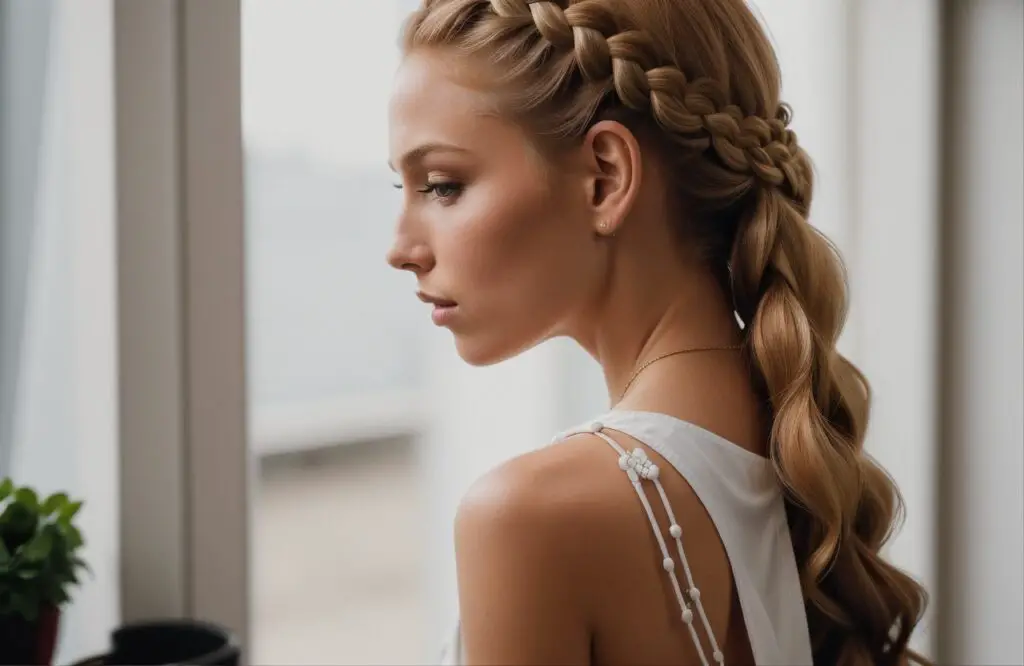
Exploring new ways to style your hair can be exciting, especially when you start mixing classic techniques with modern trends. The Dutch braid, with its distinctive raised look, offers plenty of opportunities for creativity. One way to update this style is by incorporating it into updos, which can transform a simple braid into an elegant hairstyle suitable for any occasion.
Incorporating Dutch Braids into Updos
How can you incorporate this braid into an updo? Start by creating a Dutch braid along one side of your head. Once you reach the nape of your neck, gather all your hair into a bun or a chignon. This combination adds a sophisticated touch to the classic braid, making it perfect for formal events or a chic day look.
Combining Dutch Braids with Other Braid Styles
Combining different braiding techniques can also give your hairstyle a fresh twist. Consider pairing a Dutch braid with a fishtail braid. Begin with a Dutch braid on one side and transition into a fishtail braid as you move towards the back. This blend of styles creates a visually interesting look that stands out.
Adding Accessories for a Contemporary Look
Accessories can instantly elevate your hairstyle. Think about using hairpins, ribbons, or small flowers to add a pop of color or sparkle to your braid. Here are some ideas to consider:
- Use pearl hairpins for a touch of elegance
- Weave a colorful ribbon through the braid for a playful vibe
- Add small flowers for a bohemian look
- Use metallic hair cuffs for a modern edge
- Secure with a decorative clip for a polished finish
Creating Asymmetrical Dutch Braid Styles
Asymmetrical styles can add a modern flair to your look. Try starting a Dutch braid on one side of your head and angle it diagonally towards the opposite shoulder. This approach not only highlights the braid but also creates a dynamic and trendy appearance.
Experimenting with Braid Thickness and Texture
Playing with the thickness and texture of your braid can dramatically change its look. For a fuller braid, gently pull apart the sections after braiding to create volume. Alternatively, try braiding smaller sections for a more intricate pattern. Adding texture can also enhance the braid’s appearance. Consider using a texturizing spray before braiding to give your hair more grip and definition.
With these modern twists, you can transform the classic Dutch braid into a hairstyle that fits your personal style and the occasion. Whether you’re attending a wedding or just going out for a casual day, these ideas offer endless possibilities for creativity and expression.
Styling Dutch Braids for Different Occasions
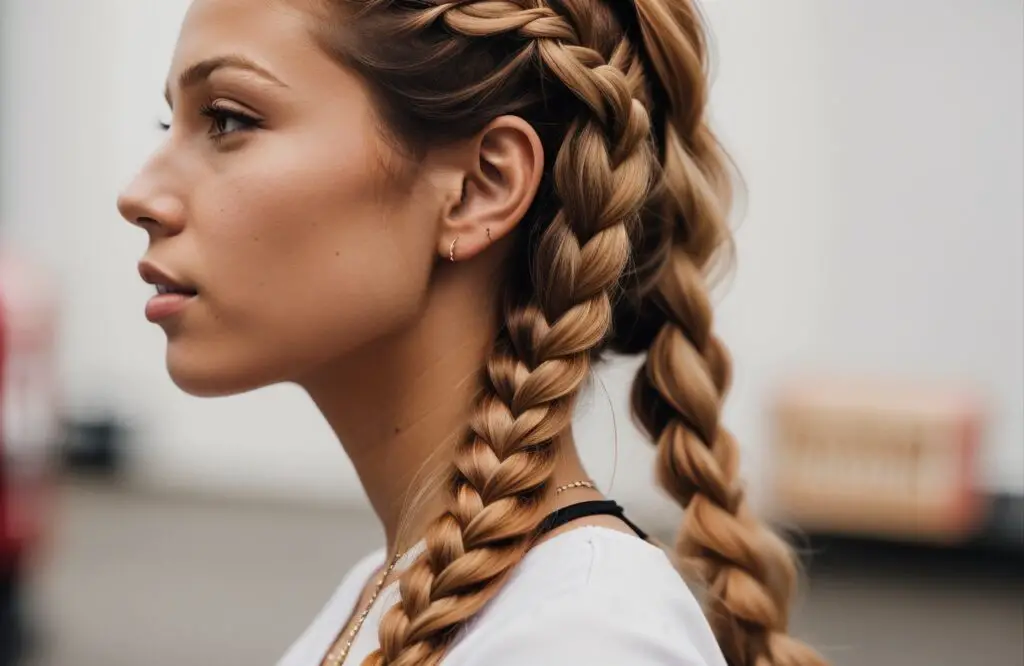
Styling your hair for different occasions can be both fun and practical, especially with the versatility of Dutch braids. These braids can be adapted to suit any event, whether you’re heading to a casual outing, a formal gathering, or even the office. Let’s explore how you can style this braid for various occasions.
Casual Everyday Dutch Braid Styles
For a relaxed day, you might want a hairstyle that’s both comfortable and stylish. A simple side Dutch braid can be perfect for this. It keeps your hair out of your face while adding a touch of elegance. You can also try a double Dutch braid for a playful look, which is great for running errands or meeting friends.
Elegant Dutch Braid Options for Formal Events
Attending a formal event calls for a more polished hairstyle. Consider creating a Dutch braid crown by braiding around your head and pinning the ends. This style exudes sophistication and pairs well with evening wear. Another option is a Dutch braid bun, where you braid your hair and then twist it into a bun at the back of your head, adding an elegant touch.
Sporty Dutch Braid Styles for Active Days
Are you planning a workout or an outdoor activity? A tight Dutch braid is ideal for keeping your hair secure and out of the way. You can go for a single braid down the back or opt for two braids for extra hold. This style not only looks great but also keeps your hair manageable during physical activities.
Dutch Braids Suitable for Work Environments
Looking professional at work doesn’t mean you have to sacrifice style. A sleek Dutch braid ponytail can be a great choice. Start with a Dutch braid at the crown and transition into a ponytail. This style is neat and keeps your hair tidy throughout the day. It’s also easy to maintain, making it perfect for busy mornings.
Adapting Dutch Braids for Seasonal Trends
As seasons change, so do fashion trends, and your hairstyle can reflect that. In the warmer months, consider incorporating flowers or colorful ribbons into your braid for a fresh look. During the colder months, a thicker braid can add warmth and style. Here are some ideas to adapt your braid for different seasons:
- Add small flowers for a springtime vibe
- Use bright ribbons in summer for a playful touch
- Opt for a thicker braid in fall for added texture
- Incorporate metallic accessories in winter for a festive feel
With these ideas, you can easily adapt Dutch braids to fit any occasion. Whether you’re dressing up for a special event or keeping it simple for a casual day, this braid offers endless possibilities for creativity and style.
Caring for Long Hair with Dutch Braids
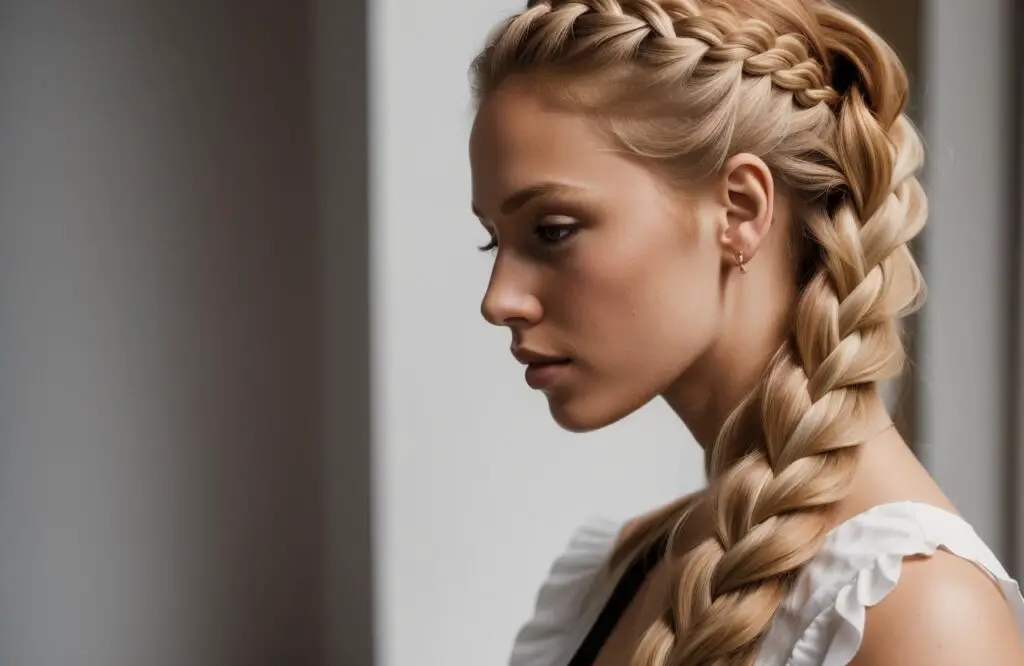
Taking care of long hair can be a rewarding experience, especially when you style it with Dutch braids. These braids not only look beautiful but also help manage your hair. However, maintaining healthy hair while wearing braids involves some specific care routines. Let’s explore how you can keep your hair in top condition with these tips.
Pre-Braiding Hair Care Tips
Before you start braiding, it’s important to prepare your hair properly. Begin by washing your hair with a gentle shampoo and conditioner to remove any dirt or product buildup. This helps keep your scalp clean and your hair healthy. After washing, apply a leave-in conditioner to add moisture and make your hair easier to manage. Detangling your hair with a wide-tooth comb is also essential to prevent knots when braiding.
Protecting Hair from Damage While Braided
Once your hair is braided, it’s crucial to protect it from damage. Avoid pulling the braids too tightly, as this can cause tension and breakage. You might wonder, how can you keep your braids neat without causing harm? Using a silk or satin scarf to wrap your hair at night can reduce friction and maintain the braid’s shape. Additionally, applying a light oil to your scalp can keep it moisturized and healthy.
Post-Braiding Hair Care Routine
After removing your braids, your hair will need some extra care. Start by gently detangling your hair with your fingers before using a comb. This helps minimize breakage. Follow up with a deep conditioning treatment to restore moisture and elasticity. You can also consider trimming the ends of your hair to get rid of any split ends that may have formed.
Recommended Products for Long Braided Hair
Choosing the right products can make a big difference in maintaining your hair’s health. Look for products that are specifically designed for braided styles. Here are some suggestions:
- A nourishing leave-in conditioner to keep hair hydrated
- Lightweight oils like argan or jojoba for scalp nourishment
- A sulfate-free shampoo to prevent dryness
- A hydrating hair mask for weekly treatments
- A silk or satin pillowcase to reduce friction
Addressing Common Issues Like Frizz and Tangles
Frizz and tangles can be common challenges when wearing braids. How can you tackle these issues effectively? To reduce frizz, apply a small amount of anti-frizz serum or smoothing cream to your braids. For tangles, use a detangling spray or leave-in conditioner to make combing easier. If you encounter persistent tangles, gently work them out with your fingers before using a comb.
By following these care tips, you can enjoy the beauty of Dutch braids while keeping your long hair healthy and vibrant. Whether you’re preparing your hair for braiding or maintaining it afterward, these steps will help you achieve the best results.
Embrace the Elegance of Dutch Braids
Dutch braids offer a versatile and timeless hairstyle that can be adapted for any occasion. Whether you’re aiming for a casual look, preparing for a formal event, or seeking a practical style for an active day, these braids provide a stylish solution. By exploring modern twists and learning how to care for your hair while braided, you can maintain a healthy and beautiful look. The combination of classic techniques with contemporary styling options allows for endless creativity, making Dutch braids a favorite choice for many women.
Caring for long hair while enjoying the beauty of Dutch braids involves a thoughtful approach. By preparing your hair properly, protecting it while braided, and following a post-braiding care routine, you can keep your locks healthy and vibrant. Selecting the right products and addressing common issues like frizz and tangles further enhances the experience. With these tips and techniques, you can confidently wear Dutch braids, knowing that your hair is well-cared for and styled to perfection.
Frequently Asked Questions
Q: What makes Dutch braids different from other braids?
A: Dutch braids are created by crossing hair sections under each other, resulting in a raised, three-dimensional look.
Q: How can I incorporate Dutch braids into an updo?
A: Start with a Dutch braid on one side and gather the rest of your hair into a bun or chignon at the nape of your neck for an elegant updo.
Q: What are some tips for maintaining healthy hair while wearing braids?
A: Use a silk or satin scarf at night to reduce friction, apply light oil to the scalp for moisture, and avoid pulling the braids too tightly.
Q: Can Dutch braids be styled for formal events?
A: Yes, styles like a Dutch braid crown or a Dutch braid bun add sophistication and are perfect for formal occasions.
Q: What products are recommended for caring for long braided hair?
A: Use nourishing leave-in conditioners, lightweight oils like argan or jojoba, sulfate-free shampoos, and hydrating hair masks.
Q: How do I prevent frizz when wearing Dutch braids?
A: Apply a small amount of anti-frizz serum or smoothing cream to your braids to keep them sleek and smooth.
Q: Are Dutch braids suitable for work environments?
A: Absolutely, a sleek Dutch braid ponytail is a neat and professional style that works well in the office.
Q: How can I adapt Dutch braids for seasonal trends?
A: Incorporate flowers or ribbons in spring and summer, or opt for thicker braids and metallic accessories in fall and winter.
Q: What should I do after removing my braids to keep my hair healthy?
A: Gently detangle with your fingers, use a deep conditioning treatment, and consider trimming split ends to maintain hair health.
